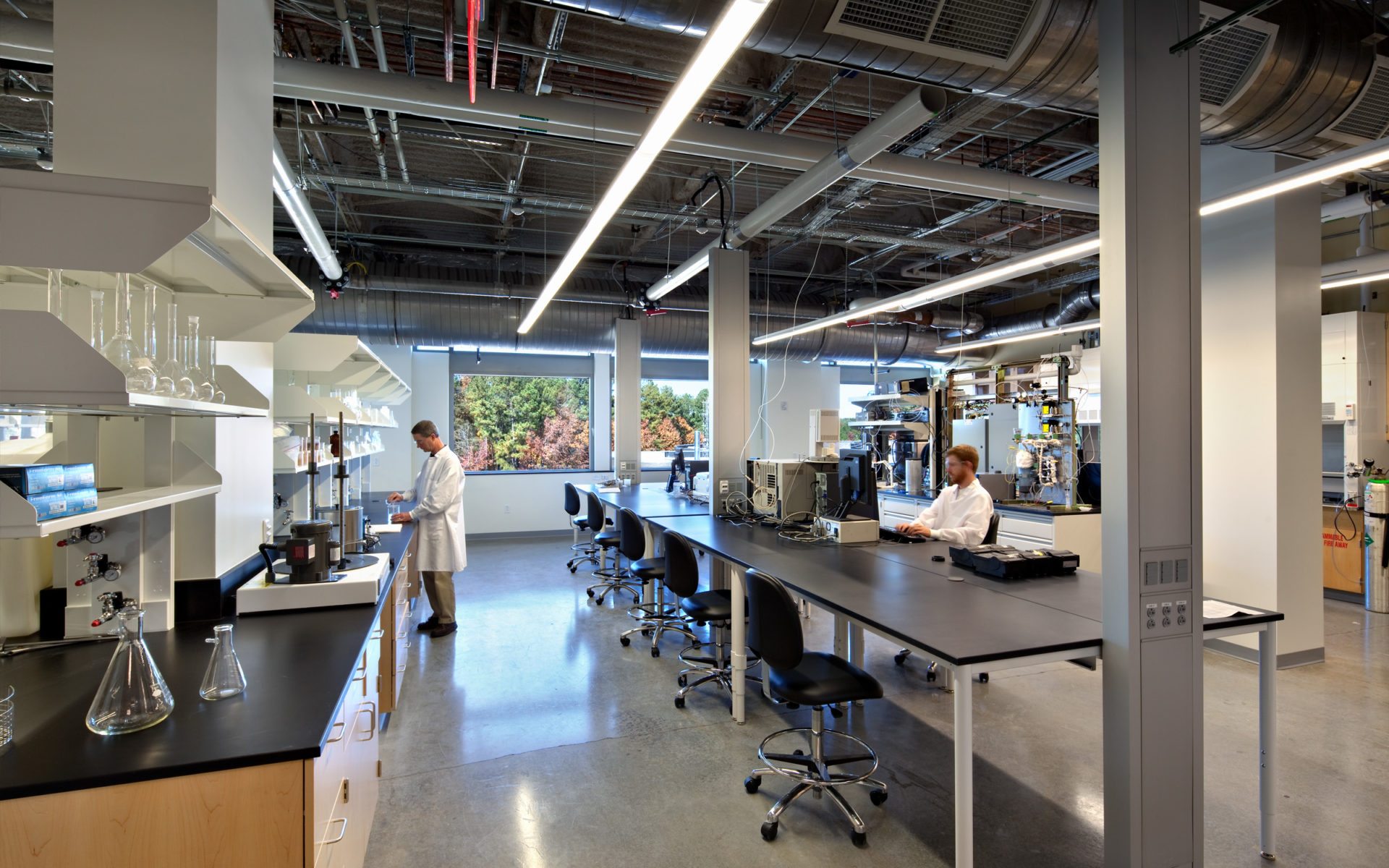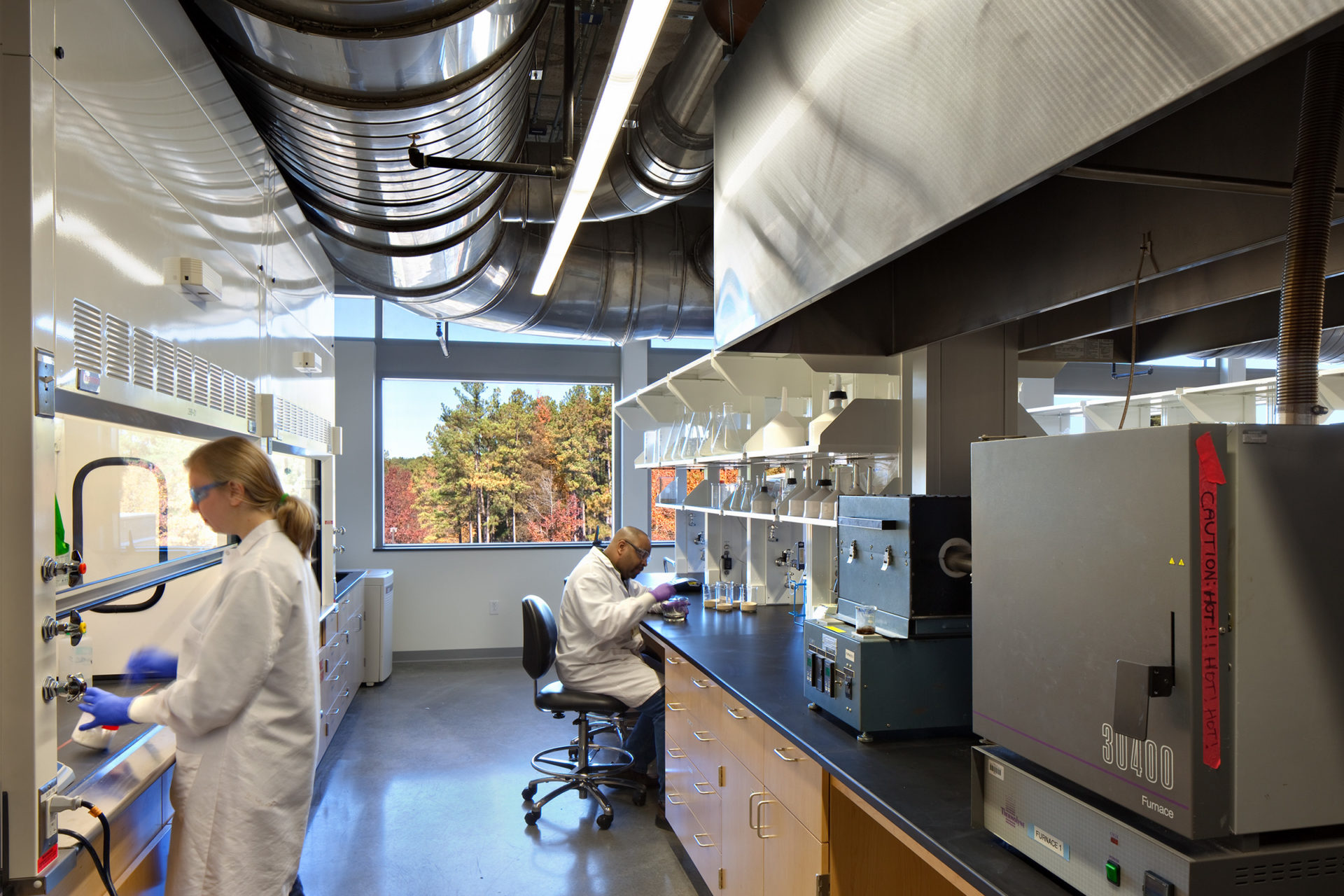This laboratory upfit for RTI, a non-profit independent research and development company, was developed after they were approached by Analytical Chemistry (AC) group, Energy Technology Division (ETD), and Analytical Chemistry + Pharmaceuticals to develop the spaces for their newest grant-funded experiments. RTI functions primarily in a co-op with researchers as tenants of their space. Each researcher has been funded for experiments, testing, or trials through governmental or for profit companies.
During the planning process, it was imperative to meet with the researcher groups to discover their needs for the space. Clark Nexsen developed the results and provided a feasibility study with suggestions for the groups and RTI. This partnership is bolstered by the constant communication and collaboration of the researching groups, RTI, and Clark Nexsen. Space needs expressed varied from equipment demands and specifications to flow of the experiments taking place. One such piece of equipment Clark Nexsen is providing planning, is an Element 2 mass spectrometer, which is extremely vibration sensitive. The Element 2 mass spectrometer is compatible with organic solution matrices, and solids, in addition to inorganic matrices and solids. After floor vibration testing was performed on the building by use of sensors, it was discovered that the mechanical systems near the elevator shaft were providing a disturbance that would harm the equipment. The metal supports positioned on the roof of the building would require isolators to prevent this vibration. Analytical Chemistry also needed a space to support an acid slab. This requires the replacement of metal materials to non-metal. All fixtures are to be replaced with materials made of polypropylene or plastic. To counter the metal ceiling frame, a solid drywall will be utilized. The discussion and planning for ETD’s space is occurring and will continue to determine all needs. The upfit of the AC space also consolidates equipment from Analytical Chemistry + Pharmaceuticals for AC to have the adequate space needed for flow of research. The previous space the group occupied was spread out. Consolidating the space would allow for more efficient production for both AC and Analytical Chemistry + Pharmaceuticals.
Clark Nexsen has identified a solution through efficient phasing specific to the strategic movement of equipment. It was expressed that during this repositioning and movement phases that both groups remain with constant access to experiments for their clients. Renovation of the space is ongoing and will be strategically phased to keep production running for all researching groups.

